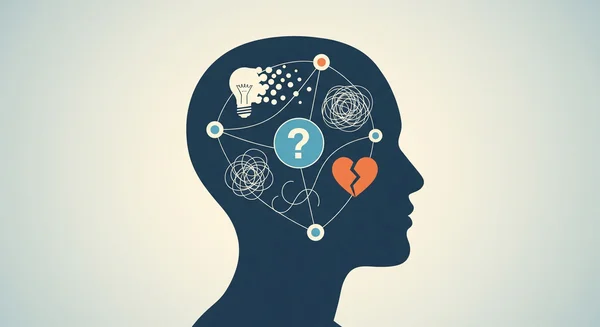What the Geriatric Depression Scale Measures: A Full Guide
Have you ever wondered what’s truly behind the questions in a mental health screening? When it comes to understanding mood in later life, a key question many people ask is, what does the geriatric depression scale measure exactly? It’s far more than just a checklist for sadness. The GDS is a nuanced tool designed to gain insight into the emotional world of older adults, helping to identify signs that might otherwise be missed. If you're ready to understand this powerful tool, you can get a firsthand experience with our free, confidential GDS test.

This guide will walk you through every aspect of the GDS, breaking down the science behind its simple questions. You'll learn not just what it asks, but why it asks it.
What is the Geriatric Scale for Depression (GDS)? A Brief Overview
The Geriatric Scale for Depression (GDS) is a highly respected and widely used self-assessment tool created specifically for older adults. Developed by Dr. J.A. Yesavage and his colleagues in 1982, its primary goal was to create a reliable screening method that was easy to administer and sensitive to the unique ways depression can manifest in later life.
Unlike other screening tools, the GDS uses a simple "Yes/No" format, making it accessible for individuals who may have physical or cognitive limitations. It intentionally steers away from questions about physical symptoms (like sleep or appetite changes) which can be misleading in older adults due to other medical conditions or medication side effects. Instead, it focuses purely on the psychological and emotional state of the individual.
The Core Dimensions Measured by the GDS Test

The GDS isn't a single-focus questionnaire. It strategically explores several key dimensions of a person's inner world to build a comprehensive picture of their well-being. Here’s what the GDS test is really looking at:
Dimension 1: Mood and Emotional Well-being
This is the most direct dimension. Questions in this area probe for persistent feelings of sadness, emptiness, and a generally low mood. It goes beyond asking "Are you sad?" to explore whether the individual feels their situation is hopeless or if they frequently feel like crying. This helps distinguish between a passing blue mood and a more pervasive state of distress.
Dimension 2: Anhedonia (Loss of Interest and Pleasure)
Perhaps one of the most significant indicators of depression is anhedonia, which is the inability to feel pleasure from activities that were once enjoyable. Have you or a loved one stopped enjoying hobbies, socializing, or daily routines? The GDS asks questions like whether the individual has dropped many of their activities and interests. This loss of engagement is a critical aspect of senior mental health that the scale is designed to capture.
Dimension 3: Energy and Activity Levels
Depression can often drain a person's physical and mental energy. The GDS includes questions to gauge this by asking about feelings of being full of energy or preferring to stay at home rather than go out. This social withdrawal and lack of vitality are common elderly depression symptoms that this powerful screening tool helps identify.
Dimension 4: Outlook on the Future
A person's outlook on the future is a strong indicator of their emotional state. The GDS assesses for feelings of helplessness and hopelessness by asking if the individual feels their situation is hopeless or that most people are better off than they are. A pessimistic and bleak view of what's to come is a core component of depressive thinking.
Dimension 5: Self-Image and Guilt
Depression often distorts self-perception, leading to feelings of worthlessness or excessive guilt. The scale touches on this by asking questions about feeling worthless or criticizing oneself. These questions help assess the individual's self-esteem and whether they are burdened by negative self-judgment.
Dimension 6: Subjective Well-being and Life Satisfaction
Beyond just sadness, the GDS evaluates a person's overall life satisfaction. Questions about feeling satisfied with one's life, feeling happy most of the time, or believing it is wonderful to be alive provide a baseline of their general contentment. A low score in this area can be a significant red flag.
Dimension 7: Cognitive Concerns
Do you often wonder if memory problems are a sign of something more? The GDS includes questions about perceived memory issues, asking if the individual feels they have more problems with memory than most. While not a cognitive test, it acknowledges the strong link between depression and subjective cognitive concerns in older adults.
Why is This Depression Scale Ideal for Elderly Populations?
So, why is GDS good for seniors? Its design genius lies in its specificity. By avoiding physical symptoms, it reduces the chance of a false positive due to other health issues. Its straightforward "Yes/No" format respects the potential for fatigue or difficulty with complex scales. It is a tool built with empathy and a deep understanding of the aging experience, making the online self-assessment both effective and user-friendly.
Understanding Your GDS Score: A Quick Look
After completing the questionnaire, the answers are tallied to produce a GDS score. While a detailed interpretation is crucial, a general rule of thumb is:
- 0-4: Considered normal
- 5 or more: Suggests possible depression and warrants a follow-up with a healthcare professional.
It's important to remember that this score is not a diagnosis. It's a snapshot in time—a starting point for a conversation. You can automatically calculate your GDS score with our simple online tool.

The GDS: A Powerful First Step in Understanding Senior Mental Health
The Geriatric Depression Scale is more than a list of questions; it's a window into the complex emotional landscape of later life. By measuring multiple dimensions—from mood and anhedonia to life satisfaction and self-worth—it provides a holistic view that helps identify those who may be struggling in silence.
Understanding what it measures is the first step. The next is taking action. Knowledge is power, and knowing where you or a loved one stands is the most powerful first step toward well-being.
Ready to see how these questions apply to you? Take our free, confidential 5-minute GDS test now and get your results instantly.
Frequently Asked Questions
Is the Geriatric Depression Scale a diagnostic tool?
No, absolutely not. The GDS is a highly effective screening tool, not a diagnostic instrument. A high score indicates that a professional evaluation by a doctor or mental health expert is strongly recommended to determine an accurate diagnosis and appropriate course of action.
What are common symptoms of depression in the elderly?
Besides a persistent low mood, common elderly depression symptoms include loss of interest in hobbies, social withdrawal, unexplained fatigue, changes in appetite, increased irritability, and feelings of worthlessness or helplessness. Our Geriatric Depression Scale test is designed to screen for many of these.
How accurate is the GDS test?
The GDS has been extensively validated in numerous studies and is considered a reliable and accurate screening tool for depression in older adult populations when used correctly. Its accuracy is one of the reasons it's so widely used in clinical and research settings.
Can I take the test on behalf of a loved one?
The GDS is designed as a self-assessment. For the most accurate results, the individual should answer the questions themselves based on how they have felt over the past week. However, you can certainly assist them with reading the questions and recording their "Yes" or "No" answers. If they are unable to participate, discussing your observations with their doctor is the best next step.